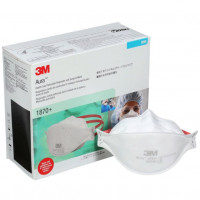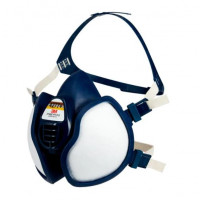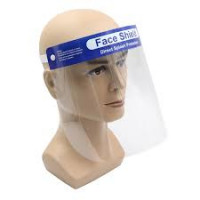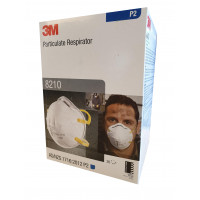Wearing masks will be made compulsory for people out in public in coronavirus-hit Melbourne and the adjacent Mitchell Shire from 11:59pm on Wednesday 22/07/2020.
Here's what we know about the new rules.
Why do you need to wear a mask?
Mr Andrews says the new rule is "commonsense", "relatively simple" and about "embedding behaviour" to bring COVID-19 case numbers down.
"We're going to be wearing masks in Victoria and potentially in other parts of the country for a very long time," he warns.
"There's no vaccine to this wildly infectious virus and it's a simple thing, but it's about changing habits, it's about becoming a simple part of your routine.
"Most of us wouldn't leave home without our keys, we wouldn't leave our home without our mobile phone."
Victoria's Chief Health Officer Brett Sutton says universal mask wearing is important because an infected person wearing a mask sheds less of the virus and people around them are less exposed.
Who needs to wear a mask?
In metropolitan Melbourne and the Mitchell Shire, everyone over the age of 12 needs to wear a mask or face covering when they leave their house for one of the four allowed reasons.
- Study or work — if you cannot work from home
- Medical care and caregiving
- Shopping for essentials
- Daily exercise
This applies to everyone in these areas, including people who live outside these areas but are visiting for one of the permitted reasons.
What's happening in regional Victoria?
Face coverings in regional Victoria continue to be recommended in situations where maintaining 1.5 metres distance is not possible.
Who doesn't need to wear a mask?
Not everyone needs to wear a face covering. Reasons to not be covered include:
- People with a medical reason
- Children under 12 years of age, or 12-year-olds if they're attending primary school
- For professional reasons because it stops you doing your job, for example working in a call centre
- A practical reason like when you go for a run
The Victorian Government says people must carry their face covering at all times to wear when they can.
It will not be a requirement for people working in childcare.
The Premier also says "common sense should guide us".
He says therefore you should take off your mask when entering a bank.
What should I wear? Will a scarf do?
Mr Andrews, who wore a black mask before Sunday's press conference, says a mask or scarf will do.
"It need not be a hospital-grade mask. It need not be one of the handmade masks … It can be a scarf, it can be a homemade mask," Mr Andrews said.
He admits "nothing is perfect" and a "face covering is just as good".
What's the penalty for not covering your face?
It's a $200 fine.
Where can I get a mask?
There are store-bought cloth and surgical masks on the market.
The Premier mentioned the state has 2.5 million to 3 million masks on order, with the first batch to arrive this week.
Who will be eligible to receive these masks will be announced later this week.
-
-
-
-
3M P2 Cupped Particulate Respirator (8210) PK=20
Regular Price: $49.95
NOW: $44.95
Can I make one?
Yes, you can.
Professor Sutton says don't get stressed if you can't buy a mask because he is talking about a face covering to cover the face and mouth.
"People just need to find a face covering."
The Victorian Government has release information about how to make and what to use to make a face mask. recommended three pieces of fabric: water
Victoria's Department of Health and Human Services recommend making a mask with three pieces of fabric: water resistant for the outer layer, blended for the middle layer, and a water absorbing cotton fabric for the inner layer.
What if I'm exercising?
Yes, this is one of the exceptions to the rule.
Mr Andrews used the example of a jogger.
He said while running they don't need to wear a mask but must have one to wear before and after their exercise.
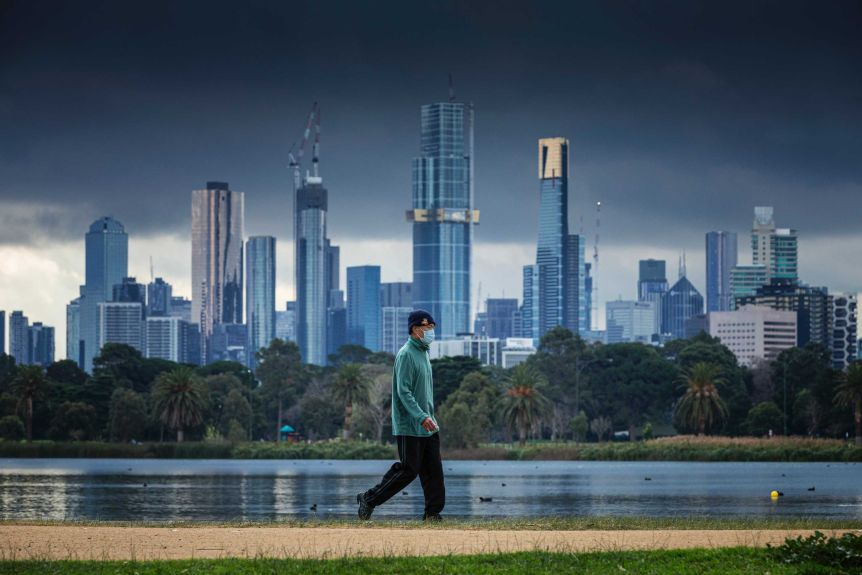
What about teachers and students?
Teachers are being told to wear a face cover wherever practical at school but not while teaching.
Mr Andrews said it was important for teachers to be able to communicate with their students.
At school, children above 12 are expected to wear masks.
Mr Andrews said students wearing masks would be "less of a barrier to their education".
Should I wear a mask while driving?
Mr Andrews says err on the side of caution and wear a mask whenever possible.
Yes, that means even if you are driving a car.
"It's not like police will be pulling over every single vehicle or every single person to check you are wearing a mask but err on the side of caution," he says.
"Err on the side of doing more than less."
How effective are cloth masks?
A mask is just one tool in fighting the spread of the virus.
Staying inside and physically distancing is ideal, but if you can't do that, wearing a mask provides a physical barrier to the virus.
Face masks help contain droplets when people cough or sneeze, reducing the likelihood of spreading the virus.
Professor Sutton says even cloth masks do act as a filter.
"Masks don't do very well in your pocket, they don't do very well sitting on your chin," Professor Sutton says.
"They do need to cover your nose and mouth to work properly."
How do I wear it properly?
You need to ensure your mask covers your nose and mouth.
According to DHHS and Choice, your homemade mask should:
- Fit securely around the face, specifically covering the nose and mouth areas
- Be secured with ties at the back of the head or ear loops
- Make sure it doesn't have holes or a valve
- Allows for breathing without restriction
- Can be laundered and machine-dried without damage or changes to its shape (cloth masks should be routinely washed in a washing machine)
How often should I change my mask?
Fabric face masks should be removed as soon as they become damp and not used again until they have been washed.
Dr Holly Seale, a senior lecturer in the School of Public Health and Community Medicine at the University of New South Wales, says it must be cleaned with detergent in a hot wash cycle in a washing machine.
It also needs to be air-dried, and completely dry before it's used again.



